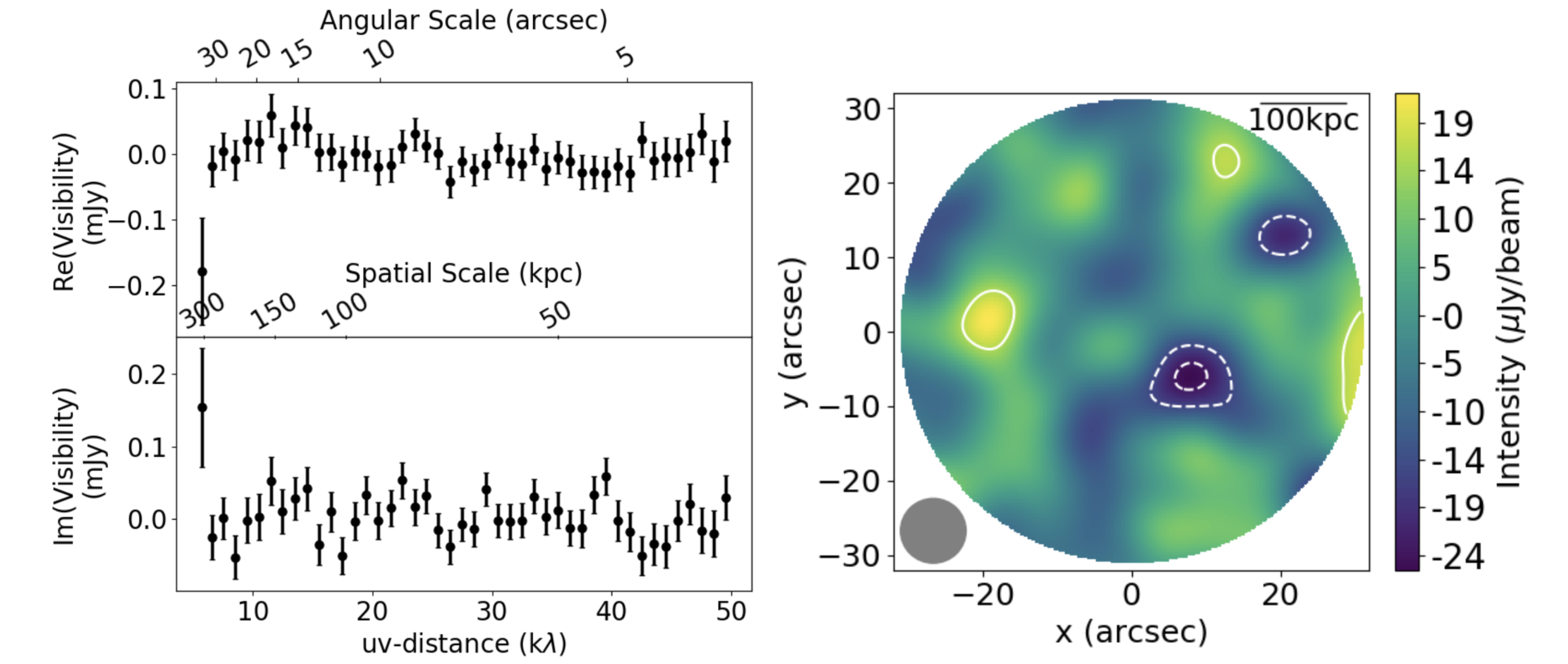Submitted by Administrator on Fri, 25/10/2019 - 15:39
Scientists at the Kavli Institute have identified hot gas around the most luminous quasar at an epoch when the universe was less than 4 billion years old.
Scientists at the Kavli Institute have identified hot gas around a galaxy which hosts one of the most luminous quasars in the Universe, seen at an epoch when the Universe was less than 4 billion years old (a redshift of 1.7). Quasars are supermassive black holes which are accreting matter at a high rate.
Models of galaxy evolution invoke negative feedback from quasars onto their host galaxies to explain the so-called 'quenching' of star formation in galaxies, which turns blue, star forming galaxies into red, passive ones. In one such feedback scenario, it is thought that the black hole at the centre of the galaxy injects thermal energy into the galaxy’s halo, reducing the accretion of fresh gas into the galaxy and eventually suppressing star formation (due to a lack of gas available inside the galaxy to form stars).
The newly-detected hot gas is distributed on very large scales (hundreds of kilo-parsecs) and can be distinguished from the galaxy's normal emission using interferometers such as the Atacama Large Millimetre Array (ALMA) which are sensitive to a large range of spatial scales.
The hot gas has a low density and is therefore difficult to detect using standard techniques. A second approach, using the so-called Sunyaev-Zeldovich effect, looks for imprints in the Cosmic Microwave Background (CMB) caused by the hot gas. The team found indications of these imprints in the CMB around HE0515-4414, which is the most luminous quasar at redshift 1.7 (when the universe was less than 4 billion years old).
Refining the observational setup of ALMA in forthcoming observations will allow astronomers to probe the very extended hot gas with higher sensitivity. With these measurements, we will be able to carry out detailed tests of the effectiveness of halo heating in quenching star formation inside galaxies, and test different models of galaxy evolution.
This investigation was led by Simcha Brownson, a PhD student at the Kavli Institute, and the results were published in this week's issue of Monthly Notices of the Royal Astronomical Society - https://academic.oup.com/mnras/advance-article/doi/10.1093/mnras/stz2945/5602606?guestAccessKey=a3ceea43-506b-4eeb-84f8-6e30ed8fda4f
or
https://arxiv.org/abs/1910.02088

Left panel: Residual visibilities showing the signal present only on very large scales. This indicates the presence of very extended hot gas. Right panel: Map of the quasar field showing the detection of a negative SZ 'bowl' (on smaller scales) to the southwest of the quasar.


